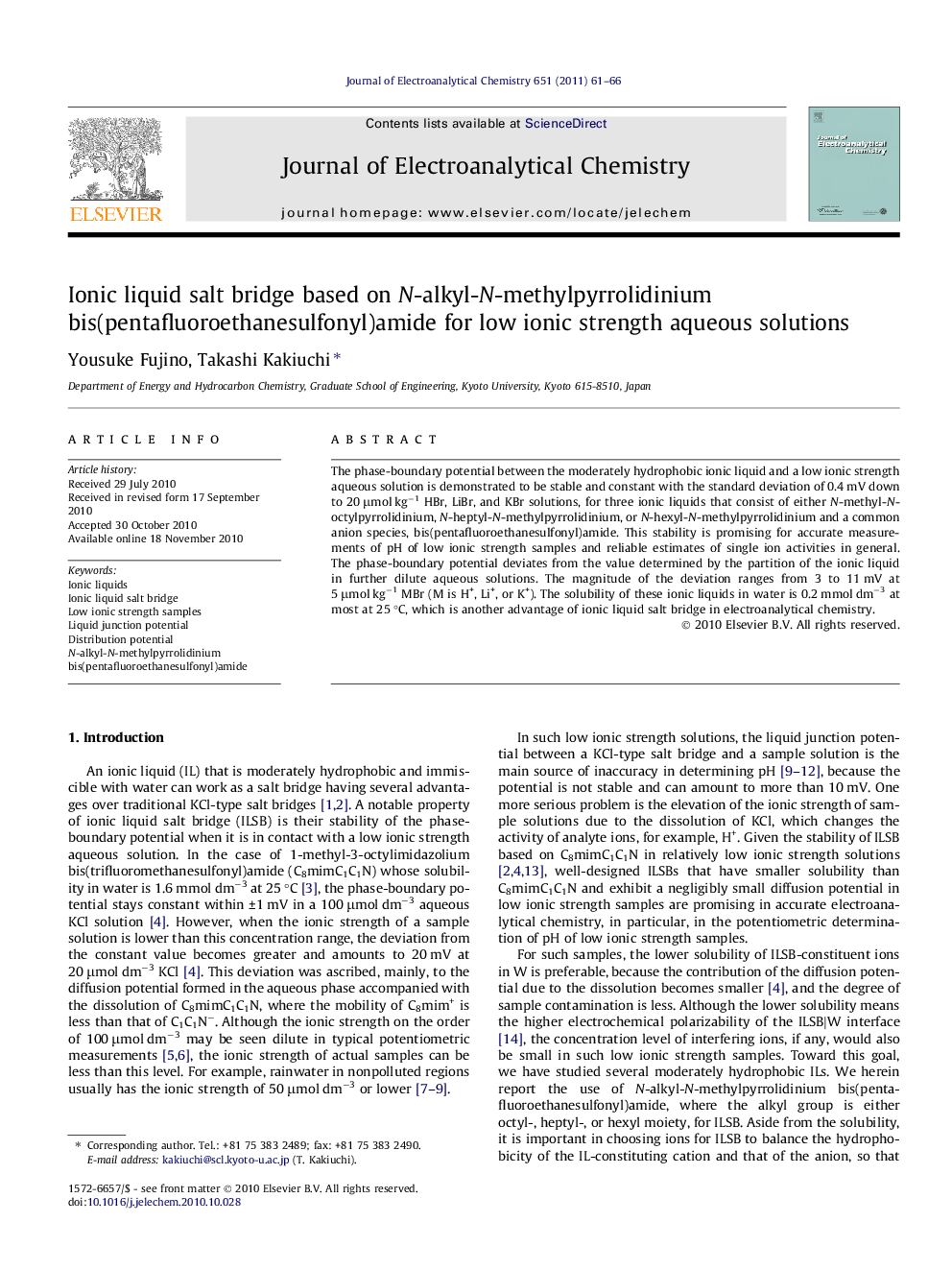| Article ID | Journal | Published Year | Pages | File Type |
|---|---|---|---|---|
| 219661 | Journal of Electroanalytical Chemistry | 2011 | 6 Pages |
The phase-boundary potential between the moderately hydrophobic ionic liquid and a low ionic strength aqueous solution is demonstrated to be stable and constant with the standard deviation of 0.4 mV down to 20 μmol kg−1 HBr, LiBr, and KBr solutions, for three ionic liquids that consist of either N-methyl-N-octylpyrrolidinium, N-heptyl-N-methylpyrrolidinium, or N-hexyl-N-methylpyrrolidinium and a common anion species, bis(pentafluoroethanesulfonyl)amide. This stability is promising for accurate measurements of pH of low ionic strength samples and reliable estimates of single ion activities in general. The phase-boundary potential deviates from the value determined by the partition of the ionic liquid in further dilute aqueous solutions. The magnitude of the deviation ranges from 3 to 11 mV at 5 μmol kg−1 MBr (M is H+, Li+, or K+). The solubility of these ionic liquids in water is 0.2 mmol dm−3 at most at 25 °C, which is another advantage of ionic liquid salt bridge in electroanalytical chemistry.
